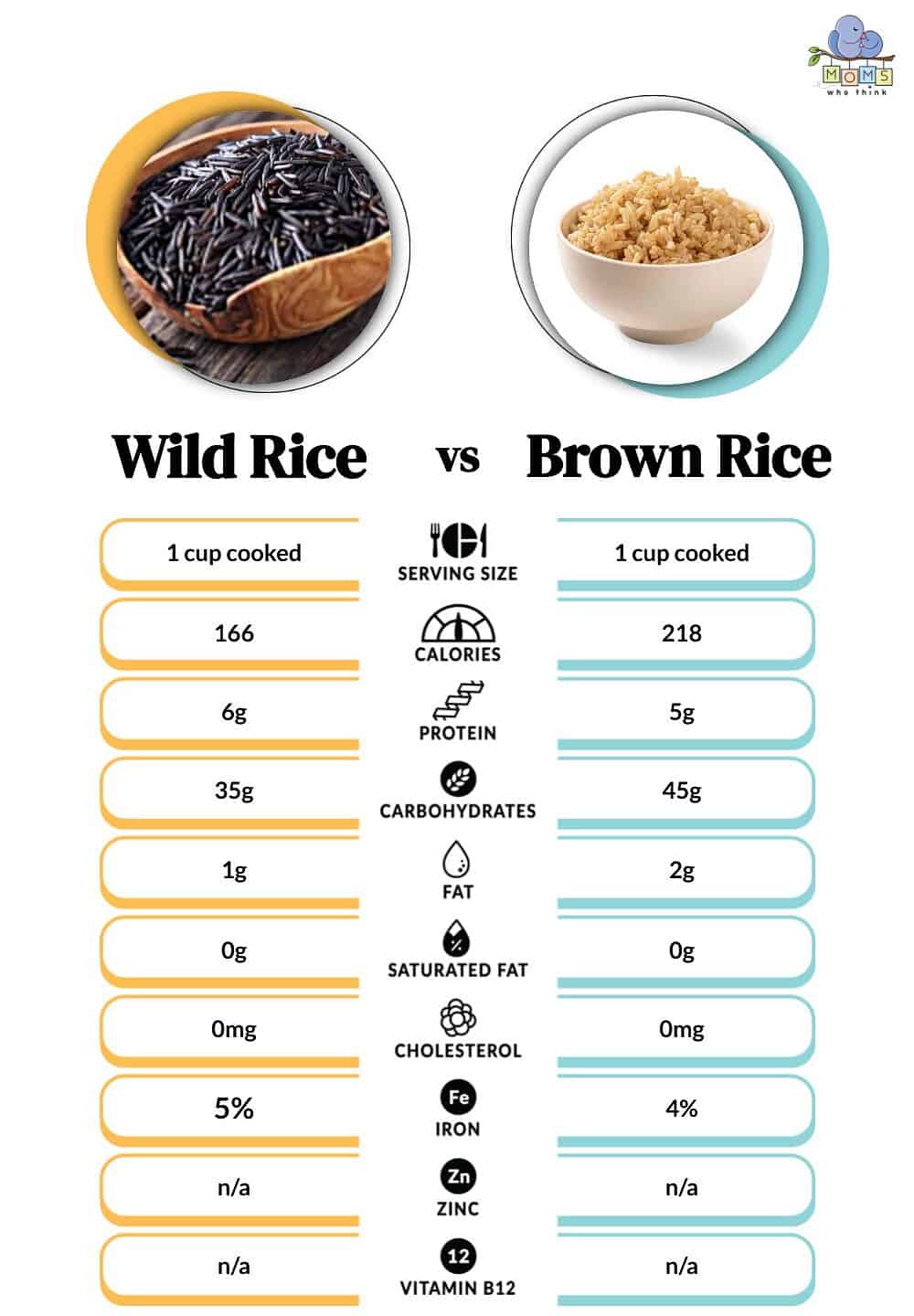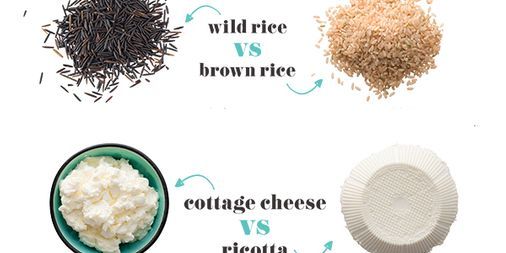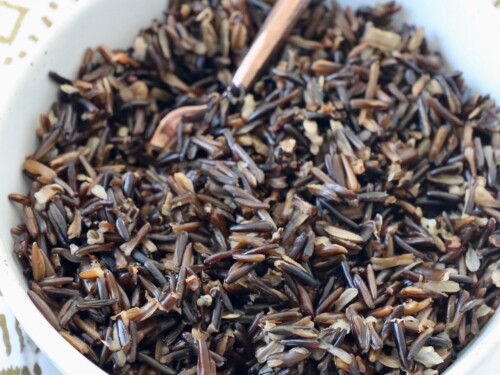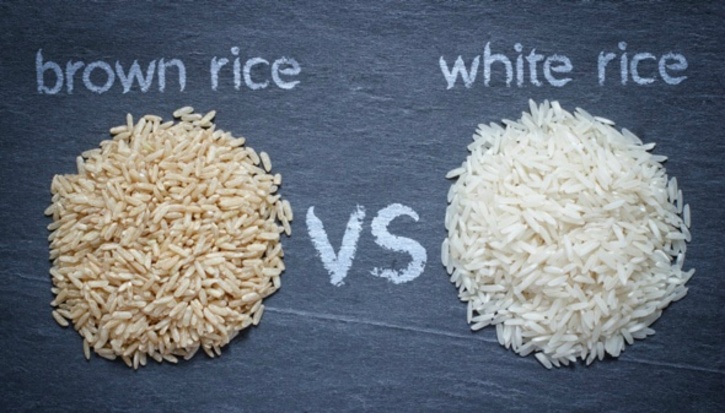Introduction

Welcome to our informative guide that will unravel the differences between white rice and wild rice. Both grains hold a distinct place in culinary traditions, offering unique flavors, textures, and nutritional profiles. Whether you’re seeking a versatile, easy-to-cook staple or a nutrient-dense option, understanding the characteristics of white rice and wild rice can help you make an informed choice. In this article, we will delve into their nutritional comparisons, health benefits, culinary uses, and environmental impact. So, let’s embark on this grain battle and discover which rice variety suits your preferences and dietary needs.
What Is White Rice?
White rice is a highly refined grain that is derived from the removal of the outer husk, bran, and germ layers of the rice grain. This process results in a more mild and neutral flavor compared to other rice varieties. White rice is available in both short-grain and long-grain forms, offering versatility in cooking. It is a staple ingredient in many cuisines worldwide and is widely appreciated for its fluffy and tender texture. However, it is important to note that the refining process removes much of the nutritional content found in the outer layers of the rice grain.
What Is Wild Rice?
Wild rice is a nutritious grain that is not actually a true rice but rather the seeds of aquatic grasses. It has a distinctive, nutty flavor and a slightly chewy texture. Wild rice is considered a whole grain and is rich in fiber, protein, and essential minerals such as potassium and zinc. It is also gluten-free, making it a suitable option for those with gluten sensitivities or celiac disease. Wild rice is often used in various dishes, including salads, stir-fries, soups, and side dishes, adding a unique taste and texture to meals.
Nutritional Comparison

When comparing the nutritional profiles of white rice and wild rice, it is clear that wild rice takes the lead in terms of nutritional value. Wild rice is packed with more protein, fiber, and antioxidants compared to white rice. It also contains essential minerals such as potassium and zinc. On the other hand, white rice is lower in fiber and protein and lacks the abundance of nutrients found in wild rice. Therefore, incorporating wild rice into your diet can provide you with a higher nutritional intake and contribute to overall better health.
Nutritional Profile Of White Rice
White rice is a staple grain that is commonly consumed around the world. However, when it comes to nutritional value, white rice falls behind wild rice. White rice lacks the abundance of nutrients found in wild rice. It is lower in fiber and protein compared to wild rice. It also does not contain as many antioxidants and essential minerals. While white rice does provide carbohydrates for energy, it is important to consider incorporating other grains like wild rice into your diet to ensure a more well-rounded nutritional intake.
Nutritional Profile Of Wild Rice
Wild rice is a highly nutritious grain, packed with essential vitamins and minerals. It is higher in protein compared to white rice and other grains, making it a great source of plant-based protein for vegetarians and vegans. Wild rice is rich in fiber, which aids in digestion and helps regulate blood sugar levels. It also contains antioxidants, such as anthocyanins, that have been linked to numerous health benefits. Additionally, wild rice is a good source of folate, phosphorus, magnesium, zinc, and manganese, which are essential for overall health and wellbeing. Incorporating wild rice into your diet can provide a nutritional boost and contribute to a balanced meal plan.
Health Benefits

Consuming white rice as part of a balanced diet can provide several health benefits. While it is lower in nutrients compared to wild rice, it still offers some advantages. White rice is a good source of energy and can help fuel the body during physical activities. It is also easily digestible and does not contain gluten, making it suitable for individuals with gluten sensitivity or celiac disease. Additionally, white rice is fortified with essential vitamins and minerals like iron and B vitamins, which are important for maintaining overall health and preventing nutrient deficiencies.
Health Benefits Of White Rice
White rice, although lower in nutrients compared to wild rice, still offers some health benefits. It is a good source of energy and can provide fuel for physical activities. White rice is easily digestible and suitable for individuals with gluten sensitivity or celiac disease since it is gluten-free. Additionally, fortified white rice contains essential vitamins and minerals like iron and B vitamins, which are important for overall health and preventing nutrient deficiencies. Incorporating white rice as part of a balanced diet can contribute to overall well-being.
Health Benefits Of Wild Rice
Wild rice offers numerous health benefits. It is a nutrient-dense grain that is rich in antioxidants, specifically anthocyanins, which have been linked to reducing inflammation and preventing chronic diseases. Wild rice is also high in fiber, which aids in digestion, helps maintain a healthy weight, and promotes heart health. It is a good source of protein, making it an excellent choice for vegetarians and vegans. Additionally, wild rice contains essential minerals like magnesium and zinc, which support immune function and contribute to overall well-being. Incorporating wild rice into a balanced diet can improve health and prevent nutrient deficiencies.
Culinary Uses And Texture

Wild rice and white rice have different culinary uses and textures. White rice is known for its versatility and is commonly used in a variety of dishes, such as rice pilaf, fried rice, and sushi. It has a soft and sticky texture when cooked, making it a great companion to saucy dishes. On the other hand, wild rice has a chewy and nutty texture, which adds depth and complexity to salads, soups, and grain bowls. Its distinct flavor and texture make it a popular choice for gourmet and gourmet-inspired recipes. Overall, both rice varieties offer unique culinary experiences.
Cooking Methods And Uses Of White Rice
White rice can be cooked using various methods, depending on the desired texture. The most common method is boiling, where the rice is cooked in a pot with water. This method is suitable for dishes like rice pilaf or as a side dish. Another popular method is steaming, where the rice is cooked in a steamer or rice cooker. This results in fluffy and separate grains, perfect for serving with stir-fries or curries. White rice can also be used to make dishes like fried rice, risotto, and sushi. Its versatility makes it a staple in many cuisines around the world.
Cooking Methods And Uses Of Wild Rice
Wild rice can be cooked using various methods, such as boiling, steaming, or using a rice cooker. It is important to note that wild rice has a longer cooking time compared to white rice, and soaking it overnight can help reduce the cooking time. When cooked, wild rice has a chewy texture and a nutty flavor, making it a versatile ingredient for salads, soups, and casseroles. It can also be used as a stuffing for poultry or added to pilafs and grain bowls for added texture and taste.
Environmental Impact And Sustainability
https://www.youtube.com/watch?v=_cc0b3QPoGw&pp=ygUlV2hpdGUgUmljZSB2cyBXaWxkIFJpY2U6IEdyYWluIEJhdHRsZQ%3D%3D

The production of white rice has a significant environmental impact. Large-scale cultivation often involves the use of chemical fertilizers, pesticides, and heavy irrigation, leading to water pollution and depletion. Additionally, the conversion of land for rice farming contributes to deforestation and the loss of biodiversity. On the other hand, wild rice is more sustainable as it grows naturally in freshwater ecosystems without the need for extensive cultivation. Harvesting wild rice in a responsible and sustainable manner helps preserve these fragile ecosystems and supports the biodiversity of aquatic plants and animals. Choosing wild rice over white rice can contribute to a more sustainable food system.
Environmental Impact Of White Rice Production
The production of white rice has a significant environmental impact. Large-scale cultivation often involves the use of chemical fertilizers, pesticides, and heavy irrigation, leading to water pollution and depletion. Additionally, the conversion of land for rice farming contributes to deforestation and the loss of biodiversity. These practices also result in greenhouse gas emissions and contribute to climate change. The intensive water requirements of white rice cultivation can also exacerbate water scarcity in regions with limited water resources. Overall, the production of white rice has detrimental effects on ecosystems and contributes to environmental degradation.
Environmental Impact Of Wild Rice Production
Wild rice production has a relatively low environmental impact compared to white rice. Unlike white rice, wild rice is grown in natural wetland habitats, which helps provide filtration for water and promotes biodiversity. This cultivation method supports the health of ecosystems and reduces the need for chemical fertilizers and pesticides. Additionally, growing wild rice requires less irrigation and water use compared to white rice, which helps in conserving water resources. Overall, the production of wild rice has a more sustainable approach and contributes to the preservation of natural habitats.
Conclusion

In conclusion, both white rice and wild rice have their own nutritional profiles, health benefits, culinary uses, and environmental impacts. White rice is a versatile and easy-to-cook staple that provides quick energy, while wild rice is nutrient-dense, high in fiber and protein, and promotes satiety. When making a choice between white rice and wild rice, it is important to consider your dietary needs, cooking preferences, and sustainability concerns. Adding variety and balance to your meals by incorporating both types of rice can offer a well-rounded and nutritious diet. Ultimately, the choice between white rice and wild rice depends on individual preferences and priorities.
Which Is Better: White Rice Or Wild Rice?
When it comes to determining which is better between white rice and wild rice, there is no definitive answer. Both types of rice have their own nutritional profiles, health benefits, and culinary uses. White rice is a versatile staple that provides quick energy, while wild rice is nutrient-dense and high in fiber and protein. The choice between these two rice varieties ultimately depends on individual dietary needs, cooking preferences, and sustainability concerns. Incorporating both types of rice can offer a well-rounded and nutritious diet, providing variety and balance to meals.
Factors To Consider In Choosing Between White Rice And Wild Rice
In choosing between white rice and wild rice, there are several factors to consider.
- Nutritional needs: Consider your specific dietary requirements and goals. If you need more protein and fiber, wild rice may be a better choice. If you need quick energy, white rice may be more suitable.
- Culinary preferences: Consider the taste and texture you prefer in rice dishes. White rice has a softer texture, while wild rice has a chewier texture and a nutty flavor.
- Cooking methods: Take into account the cooking time and convenience. White rice cooks faster and requires less preparation, while wild rice takes longer to cook.
- Environmental impact: Consider the sustainability and eco-friendliness of rice production. Wild rice is a native crop and can be more sustainable in certain regions.
By considering these factors, you can make an informed choice based on your individual needs and preferences.
FAQ: White Rice vs Wild Rice
Q: What is the difference between white rice and wild rice?
A: White rice and wild rice are both types of rice, but they differ in terms of their grain texture, taste, nutritional content, and origin.
Q: What is white rice?
A: White rice is the most commonly consumed type of rice worldwide. It is a refined grain that has had its bran and germ layers removed, leaving just the starchy endosperm.
Q: What is wild rice?
A: Wild rice is a nutritious, long-grain aquatic grass that is indigenous to North America. It has a distinctive flavor and a chewy texture when cooked, making it a popular choice for salads, side dishes, and soups.
Q: Are there any differences in taste between white rice and wild rice?
A: Yes, there is a marked difference in taste between white rice and wild rice. White rice is mild and slightly sweet, while wild rice has a nutty and earthy flavor profile.
Q: How do cooking methods differ between white rice and wild rice?
A: White rice is typically boiled or cooked in a rice cooker, and it takes a relatively short amount of time to cook. Wild rice requires more time and often needs to be boiled or simmered until tender.
Q: Which type of rice is more nutritious, white rice, or wild rice?
A: Nutritional content varies between these two types of rice. White rice is lower in fiber and micronutrients due to the refining process. Wild rice, on the other hand, is higher in fiber, protein, and essential minerals such as zinc and potassium.
Q: Can white rice and wild rice be used interchangeably in recipes?
A: Not always. The distinct flavor, texture, and cooking characteristics of wild rice may not suit all dishes that call for white rice. It is commonly used in salads, stuffing, and pilaf recipes, while white rice is often preferred in Asian cuisines, stir-fries, and sushi.
Q: Which type of rice is better for weight management?
A: If you are watching your weight, wild rice can be a better choice due to its higher fiber content. Fiber helps you feel fuller for longer, which aids in preventing overeating.
Q: Are there any dietary considerations for white rice and wild rice?
A: People with dietary restrictions, such as those following a low-carb diet or individuals with gluten intolerance, may choose wild rice as it has a lower glycemic index and is naturally gluten-free.
Q: Where can I find white rice and wild rice?
A: White rice is readily available in most grocery stores and supermarkets worldwide. Wild rice can be found in many specialty stores or health food stores, and it is often sold as a blend or packaged by itself.
In summary, while white rice and wild rice originate from different sources and have distinct characteristics such as taste, texture, and cooking methods, both have their place in a balanced diet. White rice is widely used and versatile, while wild rice offers additional nutritional benefits and a unique flavor profile. The choice between the two depends on personal preferences, dietary goals, and the specific requirements of the recipe at hand.

Kemah Cafe is a family-owned eatery that takes pride in offering a delightful array of Vietnamese, Chinese, and Thai dishes. Located at the heart of the community, Kemah Cafe has been serving up delicious Pho and other authentic Asian cuisine for many years. Founded with a passion for sharing the flavors of the East, Kemah Cafe has become a beloved culinary destination for locals and visitors alike. The warm and welcoming atmosphere of the cafe, combined with the tantalizing aromas of freshly prepared dishes, creates an unforgettable dining experience.